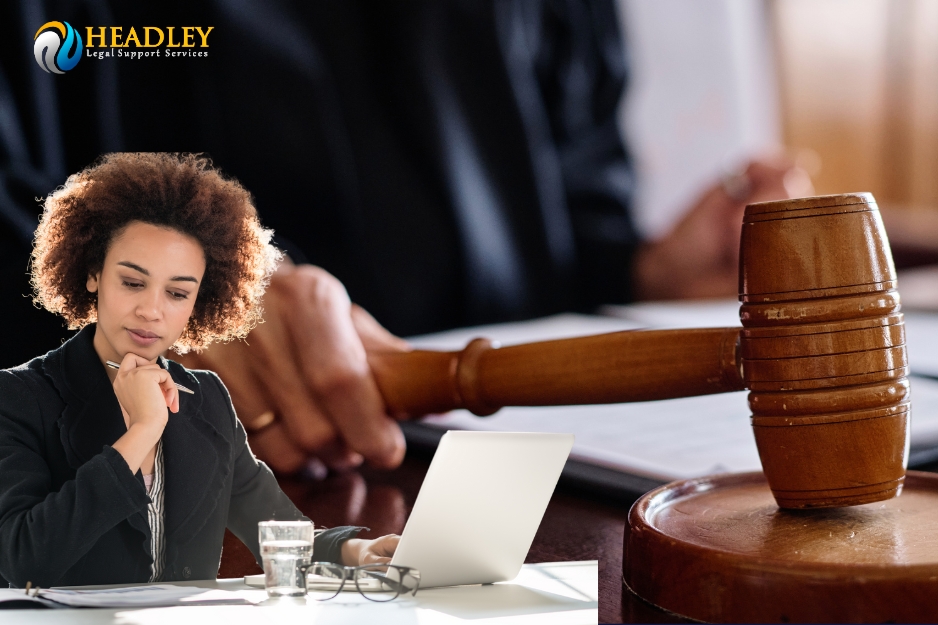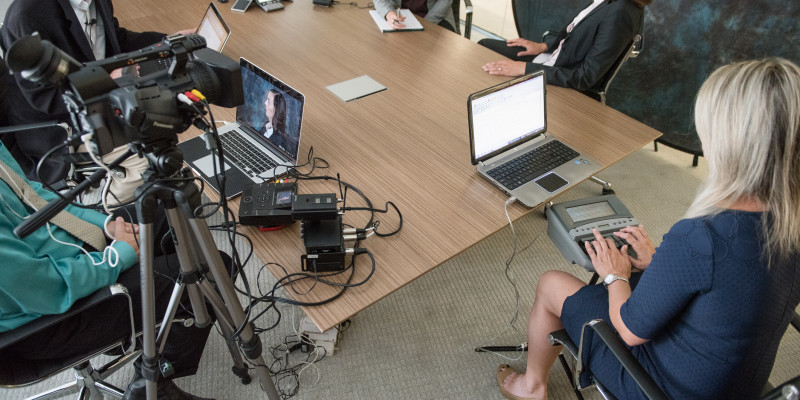How durham court reporting supports the fairness of legal proceedings
How Court Reporting Works: A Step-by-Step Guide to the Lawful Process
Court reporting is an important component of the legal system. It entails an organized procedure that assures precise paperwork of proceedings. From prep work to the final delivery of records, each step is important. Understanding just how court reporters operate offers insight right into the integrity of legal documents. The subtleties of their work can greatly influence legal end results, motivating concerns concerning the modern technologies and approaches they employ. What are the specific techniques that specify this occupation?
The Duty of Court Reporters in the Legal System
Court reporters play a crucial role in the legal system by offering trusted and exact transcripts of court process. Their work guarantees that every spoken word during tests, hearings, and depositions is documented, which is essential for maintaining a main record of events. This transcription is basic for appeals, as it allows greater courts to review the procedures and establish if any mistakes were made during the test.
Additionally, stenotype reporter aid in preserving the honesty of the lawful process by developing verbatim documents that can be referred to by legal representatives, judges, and various other events included in a case. They commonly use customized equipment and software program to record discussion with accuracy. Past the courtroom, their transcripts can act as crucial historic files, supplying insight into judicial process and the legal system's performance. Ultimately, court reporters add greatly to transparency and responsibility in lawful matters.
Planning for a Court Reporting Session
Prep work is essential for a successful court reporting session, as it guarantees the accuracy and efficiency of the transcription procedure. Court press reporters begin by examining case products, including pleadings and witness checklists, to familiarize themselves with the terminology and context. They likewise ensure that they have the essential devices, such as steno makers, notebooks, and back-up devices, all set for usage.
Prior to the session, interaction with legal groups is crucial. Reporters commonly clear up any type of particular requests concerning format or preferred terms. Furthermore, they may arrange to meet attorneys or witnesses to talk about the procedures and verify the schedule. Arriving very early to establish up the devices permits fixing potential technical concerns. On the whole, detailed prep work not just enhances the reporter's self-confidence but also contributes greatly to creating a clear and accurate record of the legal proceedings.

Catching the Record: Methods and Equipment
Using sophisticated methods and trustworthy tools, court press reporters carefully record the spoken word throughout lawful process. They use stenography, a technique entailing a specialized equipment that allows them to type numerous noises simultaneously, thus transcribing dialogue in real time. This device, called a steno key-board, is furnished with secrets that stand for words and syllables, allowing swift and precise input.
Along with stenography, court press reporters might use audio recording tools as supplementary devices. These gadgets function as back-ups, making sure that no critical information is shed throughout procedures. In addition, some reporters incorporate software program that enhances their transcription effectiveness, providing functions such as voice acknowledgment and automated formatting.
Correct positioning and emphasis are extremely important; press reporters must preserve interest on all audio speakers, recording subtleties and inflections that add to the document. Through a combination of skill and innovation, court reporters promote the integrity of the legal procedure by ensuring a exact and extensive record of occasions.
Transcribing the Procedures
Recording the process requires stenotype reporter to convert talked dialogue into created text with outstanding accuracy and speed. This procedure typically occurs immediately after the recording has been caught, using specialized software application that enables smooth transcription. Stenotype reporter need to listen attentively to the audio, making certain that every pause, inflection, and word is accurately represented in the transcript.
They often rely upon shorthand systems, personal transcription abilities, and progressed innovation to facilitate this job. The atmosphere in which they work can be fast-paced and occasionally disorderly, as legal proceedings typically entail several audio speakers and technical lingo. Court press reporters need to likewise keep focus to record nuances in tone and context that might be crucial for the lawful document. Inevitably, the precision of the transcription is important, as it serves as a certification for future reference in lawful process.
Editing the transcript and assessing
The procedure of examining and modifying the records is important for making sure accuracy in court reporting. Stenotype reporter often team up with lawyers to make clear any type of ambiguities and validate the correctness of the videotaped statements. This collaboration is crucial for maintaining the integrity of the legal document.
Value of Precision
Precision acts visit their website as the keystone of effective court reporting, as even small errors can considerably modify the meaning of legal procedures. The reviewing and editing procedure is essential in making sure that records reflect the spoken word with integrity. Stenotype reporter meticulously verify names, technical terms, and lawful lingo to maintain precision. This interest to information assists prevent misunderstandings that could affect case outcomes. Additionally, accuracy fosters depend on among attorneys, clients, and the court, reinforcing the stability of the judicial system. Mistakes can cause disagreements or allures, making it critical for press reporters to refine their work completely. Ultimately, the quest of accuracy not just boosts the integrity of the transcript however also promotes the standards of the lawful profession.
Cooperation With Attorneys
Cooperation between court reporters and lawyers is important during the assessing and modifying phase of transcript production. This process assures that the last paper accurately shows the spoken word and abides by lawful standards. Attorneys typically review records for particular terms, context, and any possible mistakes that can influence the case. Court press reporters count on attorneys' competence to clarify uncertain sections or highlight vital declarations. Efficient interaction is crucial; lawyers may give responses or demand adjustments, which stenotype reporter have to deal with quickly. This partnership not only improves the high quality of the transcript but also adds to a smoother legal process. Eventually, collective initiatives cause a precise and reliable document, necessary for lawful process and future referrals.
Providing the Final Transcript to Customers
Upon conclusion of the transcription procedure, stenotype reporter meticulously prepare the final record for shipment to their customers. This final transcript undergoes this website thorough checking to ensure precision, as any kind of mistakes can greatly affect lawful process. Stenotype reporter format the paper according to the certain demands stated by the customers or lawful firms, consisting of pagination, indexing, and any required exhibits.

Court reporters might provide a cover letter summing up key details and providing further help if needed. This detailed method warranties that customers receive a sleek, specific, and easily accessible records, important for their legal demands.
Often Asked Questions
What Credentials Are Needed to End Up Being a Court Press Reporter?
To become a court press reporter, people usually require a high college diploma, completion of a court reporting program, and qualification or licensure, depending on state demands. durham court reporting. Effectiveness in shorthand and technology is also necessary for success
How much time Does It Take to Total Court Reporting Training?
Typically, completing court reporting training takes in between 18 months to 4 years, relying on the program's intensity, the student's pace, and the certain demands of the jurisdiction in which they desire to practice.

What Is the Typical Wage of a Court Reporter?
The ordinary salary of a court press reporter varies by place and experience, normally varying from $45,000 to $100,000 every year (durham court reporting). Aspects such as field of expertise and need can substantially affect their revenues in various areas
Are Court Reporters Required to Have Qualification?
Court press reporters are commonly called for to get certification, which ensures they have the essential abilities and knowledge for accurate transcription. Accreditation demands can differ by state or territory, mirroring specialist standards within the legal neighborhood.
Can Court Reporters Work From Another Location or Freelance?
Stenotype reporter can work remotely or freelance, giving adaptability in their occupation. Many make use of modern technology to transcribe proceedings from numerous places, allowing for varied chances in the legal area while maintaining a work-life equilibrium.
Court reporters play a vital role in the lawful system by offering exact and reputable transcripts of court procedures. Furthermore, court reporters aid in protecting the integrity of the legal look here process by producing verbatim records that can be referred to by attorneys, judges, and other parties entailed in a situation. Using advanced strategies and trustworthy devices, court reporters carefully catch the talked word throughout lawful procedures. Court reporters need to likewise preserve focus to capture subtleties in tone and context that might be vital for the lawful record. To end up being a court press reporter, individuals commonly require a high institution diploma, conclusion of a court reporting program, and accreditation or licensure, depending on state needs.